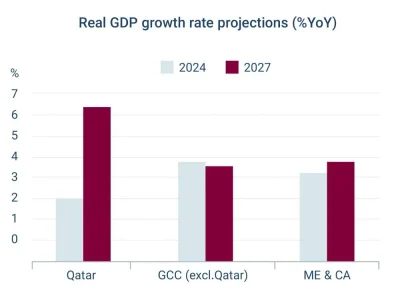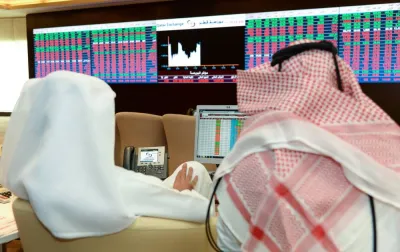Doha's listed entities reported a cumulative net profit of QR37.42bn during the first nine months (9M) of 2023 as the insurance and telecom sectors witnessed robust expansion in their net earnings, according to the data compiled by the Qatar Stock Exchange (QSE).However, the net earnings of the listed companies declined 7.69% year-on-year during January-September 2023 against a 19.29% growth the previous year period, reflecting the challenging macroeconomic environment of geopolitical uncertainties and growing concerns on hawkish monetary policies.The 9M-2023 net profitability contraction was mainly on account of weakened earnings in the industrials, consumer goods and real estate sectors as well as slowdown in the net profit growth in the transport and banking sectors.The banking and financial services, and industrials sectors together contributed more than 77% of the cumulative net profits during 9M-2023.The industrials sector, which has 10 listed constituents, saw a 40.9% year-on-year plunge in net profitability to QR7.01bn against a 24.4% surge in the year-ago period. The sector contributed 18.73% to the overall net profitability during 9M-2023 against 30.06% during 9M-2022.Within the industrials sector, the country’s underlying firms that have direct linkages with the hydrocarbons sectors saw their earnings growth weaken substantially owing to the subdued demand across most commodity sectors.The consumer goods and services sector, which has 10 listed entities, saw its total net profit tank 40.9% year-on-year to QR1.1bn at the end of nine-month ended September 2023 against a 25.78% growth the previous-year period. The sector contributed 2.94% to the overall net profitability in the review period against 4.19% during 9M-2022.The realty segment, which has four listed entities, saw total net earnings decline 4.12% year-on-year to QR1.25bn during 9M-2023 compared to a 12.08% increase the year-ago period. The sector constituted 3.34% to the overall net profitability in the review period compared to 3.3% during 9M-2022.However, the insurance sector, which has seven companies, registered a 334.92% annual surge in net earnings to QR0.85bn against 79.08% shrinkage the year-ago period. The sector contributed 2.27% to the overall net profitability during the review period against 0.43% during January-September 2022.The proposed mandatory health insurance and the substantial expansion planned in the North Field are expected to augur well for the insurance sector in the future, according to reports.The telecom sector, which has two constituents, reported a net profit of QR3.06bn, which was 8.18% of the total net profits during 9M-2023 compared to 6.04% the previous-year period.The transport sector, which has three listed constituents, saw total net profits grow 3.11% year-on-year to QR2.23bn compared to a 18.67% jump during the corresponding period of 2022. The sector's net profit constituted 5.96% to the total net profit of the listed companies during 9M-2023 against 5.48% the year-ago period.The banks and financial services sector, which has 13 listed entities, reported a 4.74% year-on-year jump in total net profit to QR21.94bn against a 4.9% expansion the comparable period of 2022. The sector contributed 58.61% to the total net profits of the listed companies in January-September 2023 compared to 50.46% during 9M-2022.

Santhosh V. Perumal
Santhosh V. Perumal, a postgraduate in Econometrics with an advance qualification in Capital Markets and Financial Services, is Gulf Times' journalist. His coverage areas are debt and equity, hydrocarbons, international trade, environment, banks, insurance and real estate. Previously, he was in New Delhi, India as Senior Finance Correspondent of PTI.
Most Read Stories























